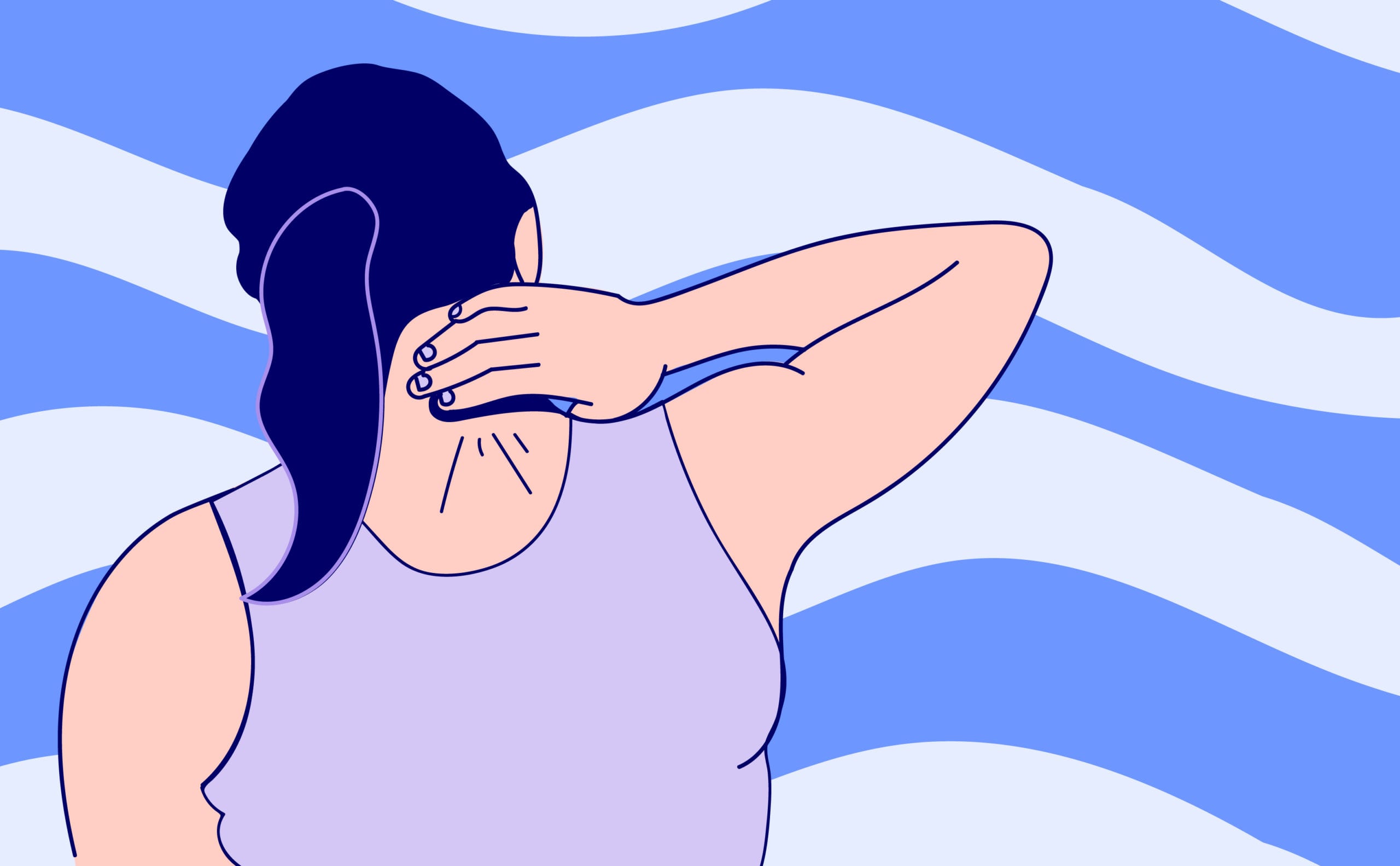We’re all about equipping you with the know-how to understand your symptoms, and we especially emphasize the specific, tangible ways to manage them. Our goal is to empower YOU to take charge of your menopause journey, starting today.
A quick note about product recommendations…Elektra Health is not paid to feature any products. We just like them and think you might too, though we can’t guarantee any results.
Lifestyle
Exercise
Weight-bearing exercise is one of THE best things we can do for our bones since it helps with balance and core strength.
Balance and core strength prevents us from falling, which is so important since the risk of fractures increases exponentially after the first fragility fracture.
Weight-bearing exercises pit you against gravity, i.e. walking, hiking, jogging, climbing stairs, playing tennis, and dancing. Resistance exercises – such as lifting weights – can also strengthen bones. According to the NIH, exercises like swimming and cycling do strengthen muscles and have cardiovascular benefits, but are not the best types of exercise to protect your bones.
We recommend focusing on major muscle groups twice per week, with a day of rest between each. Not sure where to start? Here are some helpful tips:
- Kick things off with 10 minutes per day of power walking with small weights in your hands. Put on a good playlist and pump those biceps!
- Turn to YouTube for guided exercises designed specifically for osteoporosis. This video by Dr. Andrea Furlan, MD, PhD is one of our go-tos.
Nutrition & Diet
Calcium is needed for bone health, which is especially important for us to prevent a loss in bone density. We should get about 1,000 – 1,200 mg daily, preferably from food sources. Here’s a great list of foods high in calcium.
In order to ensure that our bodies are able to absorb the calcium, it’s important to cut down on alcohol, which interferes with the pancreas’ ability to absorb both calcium and vitamin D. As we know, alcohol also affects the liver, which is instrumental in activating our stores of vitamin D to facilitate calcium absorption. Any way you look at it, alcohol’s not great for our bones, especially when consumption exceeds 2-3 ounces (or drinks) every day.
Interested in more nutrition know-how? Check out Elektra’s guide to nutrition during the menopause transition.
Supplements & Over-the-Counter Solutions
Supplements and over-the-counter solutions may be effective in supporting your bone mass…if you choose wisely. We recommend consulting with your healthcare provider first to ensure you’re using something with optimal efficacy and safety (i.e. backed by clinical research) or consulting with Elektra’s providers. Here’s a quick primer from our team on how to go about selecting high-quality supplements.
Calcium
As mentioned above, calcium is necessary for bone health and if you’re not getting enough from food you can supplement with additional calcium. There are two types to choose from: carbonate and citrate. Carbonate is typically cheaper, although harder to absorb, so it has to be taken with a meal. Citrate, on the other hand, is more expensive but doesn’t need to be taken with food. It’s recommended that women ages <50 get 1000 mg daily and 50+ get 1200 mg daily.
There is such a thing as too much calcium (which poses cardiovascular risks), so be sure to read the labels carefully and, if possible, prioritize getting it from natural foods.
Vitamin D3
Vitamin D3 promotes, among other things, immune health and bone health. Our bodies need it in order to absorb calcium. While the sun is a natural source of vitamin D, most sunblocks limit the production of this essential vitamin in our skin. And even if we purchase vitamin D-fortified foods (e.g., milk and fish oil), it’s typically not sufficient. The National Osteoporosis Foundation recommends 1000 IU of D3 daily, but some providers may recommend more and if you’re deficient or low, your doctor may recommend higher doses.
Although there’s controversy over what constitutes an “optimal” level, these are the numbers we typically reference: under 12 ng/mL as deficient, 12-20 ng/mL as insufficient, 20-30 ng/mL as mildly low, and 30+ ng/mL as normal. Elektra’s founding physician, Dr. Anna Barbieri, MD, aims for a range of 40-60 ng/mL. Vitamin D level is checked by a simple blood test and is often part of a regular wellness exam. Ask your provider or Elektra.
Vitamin K2
Data on the relationship between vitamin K2 and bone health is mixed — some studies show it can decrease the loss of bone density and prevent fractures, while others show that it doesn’t. This one’s really up to the practitioner’s judgment.
Vitamin K can be found in various food sources such as full-fat dairy, egg yolks, liver, and fermented foods like sauerkraut, miso, and natto (fermented soybeans). If you do take it in supplement form — either as a stand-alone or combined calcium/vitamin K product — keep in mind that the daily recommended intake for vitamin K in all its forms (K1 & K2) is 90 mcg.
Magnesium
Most Americans don’t get enough of this mineral (which is found in leafy greens, salmon, nuts, seeds, legumes, fortified breakfast cereals, and milk products) and opt for a supplement to help prevent osteoporosis. Magnesium also has the added benefit of helping with joint aches and promoting quality sleep.
An ideal balance is two parts calcium to one part magnesium. So if, for example, your multivitamin has 1,000 mg of calcium, it should have 500 mg of magnesium.
Keep an eye out for signs of excess magnesium, including stomach upset and diarrhea.
Note that supplements often come in combinations. For example, vitamin D and calcium, or vitamin D and K2.
Prescription
Hormonal
As we mentioned above, menopause is the most common cause of osteoporosis. For this reason, hormone therapy, and in particular estrogen therapy, can help prevent osteoporosis, along with treating other perimenopausal/menopausal symptoms.
Once the diagnosis of osteoporosis is made, however. estrogen therapy is not currently recommended as a first line treatment. Fortunately, there are a number of other options as discussed below.
There’s more information on the risks and benefits of hormone replacement therapy (HRT) in our complete guide.
Non-Hormonal
Raloxifene & Bazedoxifene
Both are selective estrogen receptor modulators (SERMs) that help prevent bone loss, improve bone mineral density (BMD), and decrease the risk of vertebral fracture. Raloxifene is typically prescribed for osteoporosis prevention when there is an independent need for breast cancer prevention as well. Raloxifene is also known under its brand name of Evista and Bazedoxifene is part of a combination estrogen/SERM therapy known as Duavee.
Alendronate & Risedronate
Alendronate and Risedronate belong to a family of drugs called bisphosphantes. They are often used as first-line treatment for osteoporosis, and are typically administered for 5 years. Since they can cause stomach irritation, one must remain upright for at least 30 minutes after taking them to limit this side effect. Alendronate and Risedronate are also known by their brand names, Fosamax and Actonel.
Denosumab
Denosumab, known by its brand name of Prolia, is a monoclonal antibody injection used to treat osteoporosis, and is given every 6 months.
Zoledronic Acid
Zoledronic acid, also known as Reclast, is a bisphosphonate administered intravenously once per year.
Newer osteoporosis drugs include Teriparatide (Forteo), Abaloparatide (Tymlos), and Romosozumab (Evenity).
We’re always keeping an eye out on emerging research and the latest clinical studies. Subscribe to our weekly Elektra Digest for the latest, science-based info direct to your inbox. Something work well for you that’s not listed here? We want to hear it! Shoot us a note at hello@elektrahealth.desgsr.com. (We’re human, promise.)
Pro tip #2
You don’t need fancy workout equipment in order to strengthen those muscles. Keep this list of 12 balancing exercises handy — and remember, a soup can totally counts as a weight!
Pro tip #3
When scheduling an appointment with your doctor, be proactive in asking for extra time to talk osteoporosis. Come prepared with medical history (especially any relatives with hip fractures) and bring a list of medications you’re taking. Be forthcoming about your alcohol consumption and, if you receive a bone mineral density test, be sure to ask for a copy of the test results.
Disclaimer: This information is for general educational purposes, and should not be used as a substitute for medical advice, diagnosis, or treatment of any health condition or problem.
As with anything you put into your body, taking dietary supplements can also involve health risks. You should consult a medical professional before taking supplements and inform your doctor about any supplements, as well as any medications you already take, since there may be interactions.
Helpful? Share the wealth!
Share with a friend who deserves evidence-based expertise &
solutions.





